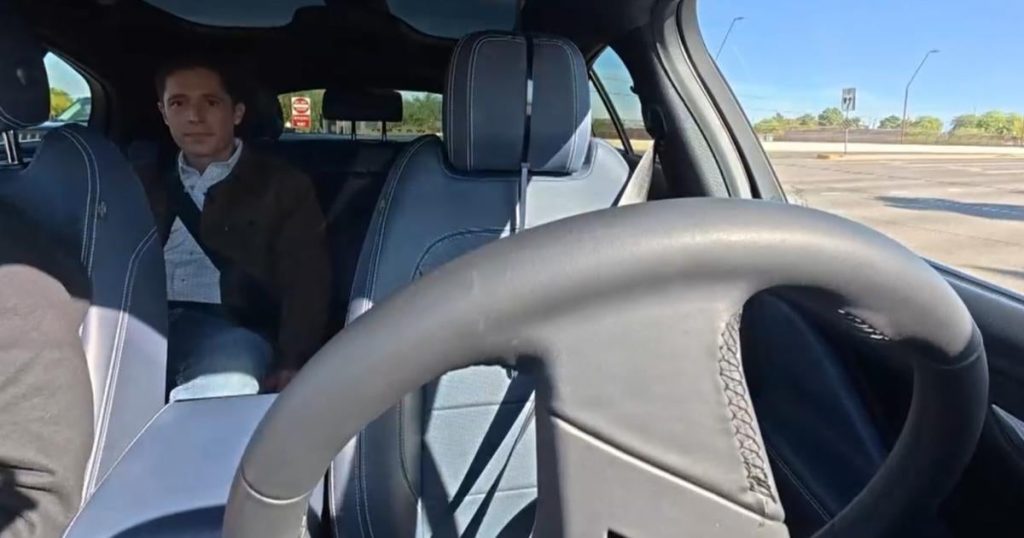The Future of Driving: Waymo’s Self-Driving Cars
The future of driving is rapidly evolving, and one of the frontrunners in this technological revolution is Waymo, a subsidiary of Alphabet, Google’s parent company. Waymo is pushing the boundaries of autonomous driving technology, aiming to make self-driving cars a common sight on our roads. In a recent development, the company has begun testing its self-driving vehicles on highways, a significant step forward in their mission to revolutionize transportation. CBS News correspondent Kris Van Cleave recently took a ride in one of these vehicles to get a firsthand look at the technology and its potential.
A Closer Look: Kris Van Cleave’s Test Drive
Van Cleave’s experience in a Waymo self-driving car on a highway was both exhilarating and reassuring. As the car merged onto the highway, accelerated to the speed limit, and navigated through various traffic scenarios, the seamless and precise movements of the vehicle were impressive. Waymo’s advanced sensors and AI algorithms allow the car to perceive its environment in real-time, making split-second decisions to ensure safety. The ride was smooth and comfortable, with the vehicle handling lane changes, merging, and maintaining a safe distance from other cars with ease. This level of automation is a testament to the significant progress Waymo has made in autonomous driving technology.
The Technology Behind Waymo’s Success
At the heart of Waymo’s success is a sophisticated suite of sensors and AI algorithms that work together to create a comprehensive understanding of the vehicle’s surroundings. Lidar (Light Detection and Ranging) sensors provide a detailed 3D map of the environment, while cameras capture visual data to identify objects such as other cars, pedestrians, and road signs. Radar sensors detect the speed and distance of objects, and ultrasound sensors help with precise positioning and parking. All this data is processed by powerful onboard computers that use machine learning algorithms to make real-time driving decisions. The combination of these technologies ensures that Waymo’s vehicles can operate safely and efficiently in a variety of driving conditions.
Safety and Reliability: Waymo’s Top Priorities
Safety is the paramount concern for Waymo, and the company has implemented rigorous testing and validation processes to ensure the reliability of its self-driving technology. Waymo’s vehicles have undergone extensive testing in both controlled environments and real-world conditions. The company’s autonomous fleet has driven millions of miles on public roads, collecting valuable data and refining the AI algorithms. Waymo also conducts virtual simulations to test the vehicles in a wide range of scenarios, from common driving situations to rare and challenging events. This comprehensive approach to testing helps Waymo identify and address potential issues, making their self-driving cars some of the safest on the road.
Expanding to Highways: The Next Big Step
The decision to test Waymo’s self-driving cars on highways is a significant milestone in the company’s journey. Highways present unique challenges, such as higher speeds, more complex traffic patterns, and the need to navigate interchanges and toll booths. By successfully operating on highways, Waymo’s vehicles demonstrate the advanced capabilities required to handle these challenges. This expansion opens up new possibilities for the application of self-driving technology, from long-distance travel to freight transportation. It also brings us one step closer to a future where self-driving cars are a common and reliable mode of transportation.
The Future of Transportation: A Closer Reality
The potential impact of self-driving technology on transportation is profound. Waymo’s self-driving cars have the potential to reduce traffic accidents, which are a leading cause of death and injury on the roads. They can also improve traffic flow and reduce congestion, making travel more efficient and reducing carbon emissions. For individuals, self-driving cars offer the convenience of hands-free driving, allowing passengers to work, relax, or engage in other activities during their commute. As Waymo continues to refine and expand its technology, the future of transportation is becoming a closer reality. The road ahead is exciting, and the journey, as demonstrated by Kris Van Cleave’s test drive, is already underway.












